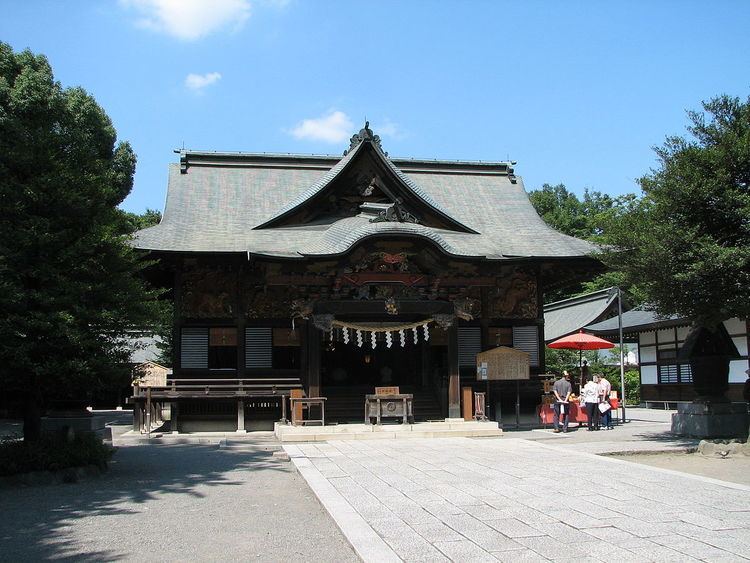Phone +81 494-22-0262 | ||
 | ||
Website www.chichibu-jinja.or.jp Similar Takaratozan Shrine, Chichibu Station, Seibu‑Chichibu Station, Mount Bukō, 羊山公園 Hitsujiyama Park Profiles | ||
Setsubun japanese spring exorcism at chichibu shrine
The Chichibu Shrine (秩父神社, Chichibu-jinja) is a Japanese Shinto shrine at Chichibu in Saitama Prefecture.
Contents
- Setsubun japanese spring exorcism at chichibu shrine
- Chichibu shrine saitama one minute japan travel guide
- History
- Events
- References
Chichibu shrine saitama one minute japan travel guide
History
According to text in the Sendai Kuji Hongi (Kujiki), Chichibuhiko-no-mikoto, the tenth-generation descendant of the Kuni no miyatsuko of Chichibu Province, established the shrine in the tenth year of Emperor Sujin to worship Yagokoro-omoikane-no-mikoto.
The shrine enhrines
During the Kamakura period, the shrine merged with a neighboring temple, and was known as Myōken-gū until the separation of Shinto and Buddhism (Shinbutsu bunri) in the late-19th century.
In the Edo period, it was one of 34 sacred sites of the old Chichibu Province or Chichibu District.
In the Meiji period it took the name Chichbu Shrine, with the characters 知知夫神社 appearing on the tablet of the torii.
In the system of ranked Shinto shrines, Chichibu was listed among the 3rd class of nationally significant shrines or Kokuhei Shōsha (国幣小社).
The shrine's grounds include a number of subsidiary shrines. A Tenjin Shrine, Tōshō-gū, and a Suwa Shrine are among them.
Events
The shrine hosts a number of events. The rice-planting festival takes place annually on April 4. The mid-summer Kawase Festival is celebrated on July 19 and 20. The Banba-machi Suwa Shrine festival is not annual, but occasional. It resembles the Onbashira festival of the Suwa Taisha.
Chichibu's annual night festival draws the biggest crowds. Celebrated in December, it spans the first six days of the month. The parading of floats is listed as part of the national cultural heritage.
The national government has also recognized the shrine's sacred dance (kagura) as an important cultural asset. Similar honors have been awarded to its festival music, the floats, buildings and other possessions.
